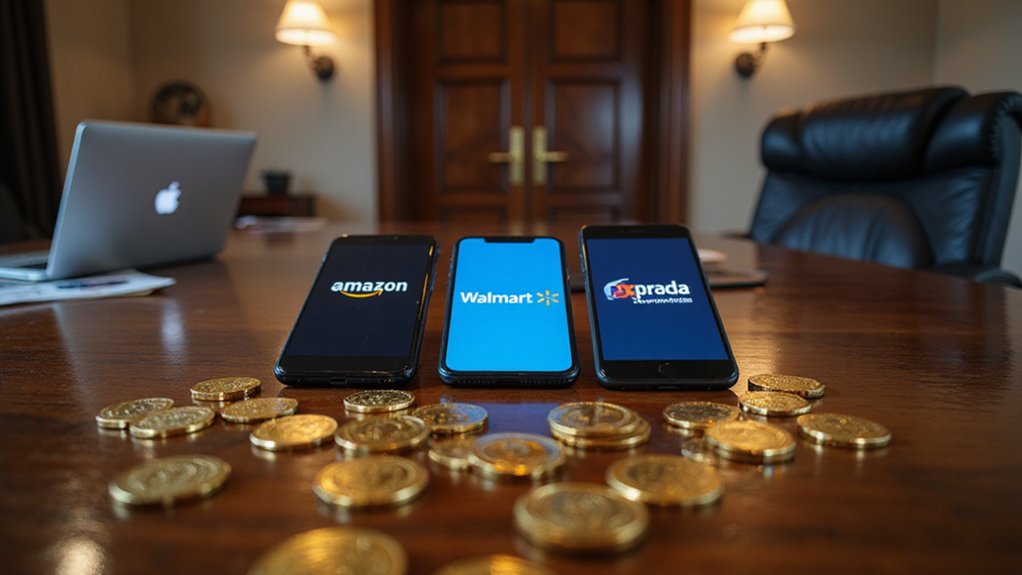The relentless pursuit of margin optimization has led three retail behemoths—Amazon, Walmart, and Expedia—down an intriguing path toward stablecoins, digital assets that promise to liberate them from the tyrannical grip of interchange fees that have long enriched credit card networks at merchants’ expense.
These companies, collectively processing hundreds of billions in annual transactions, have grown weary of surrendering 1% to 3% of every purchase to payment processors—a seemingly modest toll that compounds into staggering annual tributes.
The mathematics are compelling, if not mildly infuriating for shareholders.
Amazon’s $638 billion in annual revenue suggests card fees alone could exceed $6 billion yearly, while Walmart’s e-commerce operations surpassing $100 billion face similar mathematical brutality.
Stablecoins offer an elegant solution: near-instantaneous settlement times that make traditional card processing appear positively medieval by comparison, coupled with transaction costs that would make credit card executives reach for their smelling salts.
The operational advantages extend beyond mere cost reduction.
While conventional card payments languish in settlement limbo for days, stablecoins promise immediate finality—a cash flow improvement that could prove transformative for retailers operating on razor-thin margins. Leading examples like DAI demonstrate how Ethereum-based stablecoins use sophisticated smart contracts to maintain dollar parity, offering the stability retailers require for large-scale payment processing.
Companies are exploring both brand-specific digital currencies tailored to their ecosystems and external stablecoins accessible through merchant consortia, suggesting a multi-pronged approach to payment innovation. Walmart has already established its Money Center services and lending operations, positioning itself strategically for the transition to proprietary digital payment solutions.
However, this digital revolution hinges precariously on regulatory clarity, specifically the pending Genius Act scheduled for final Senate consideration on June 17.
Without this legislative framework, stablecoin adoption remains trapped in regulatory purgatory, regardless of its economic merits.
The irony is palpable: companies capable of delivering packages globally within hours must await congressional approval to modernize their payment infrastructure.
The broader implications are seismic.
Traditional banking institutions, suddenly confronting the prospect of billions in diverted transaction fees, are scrambling to develop joint stablecoin initiatives—a defensive maneuver that acknowledges the inevitable disruption of payment systems that have remained largely unchanged for decades. Major U.S. banks including Citi, Chase, Bank of America, and Wells Fargo are considering joint stablecoin issuance as they recognize the $250 billion stablecoin market’s potential to reshape payment infrastructure.
The question isn’t whether this transformation will occur, but rather how quickly established financial intermediaries can adapt to a landscape where retailers no longer require their expensive services.









